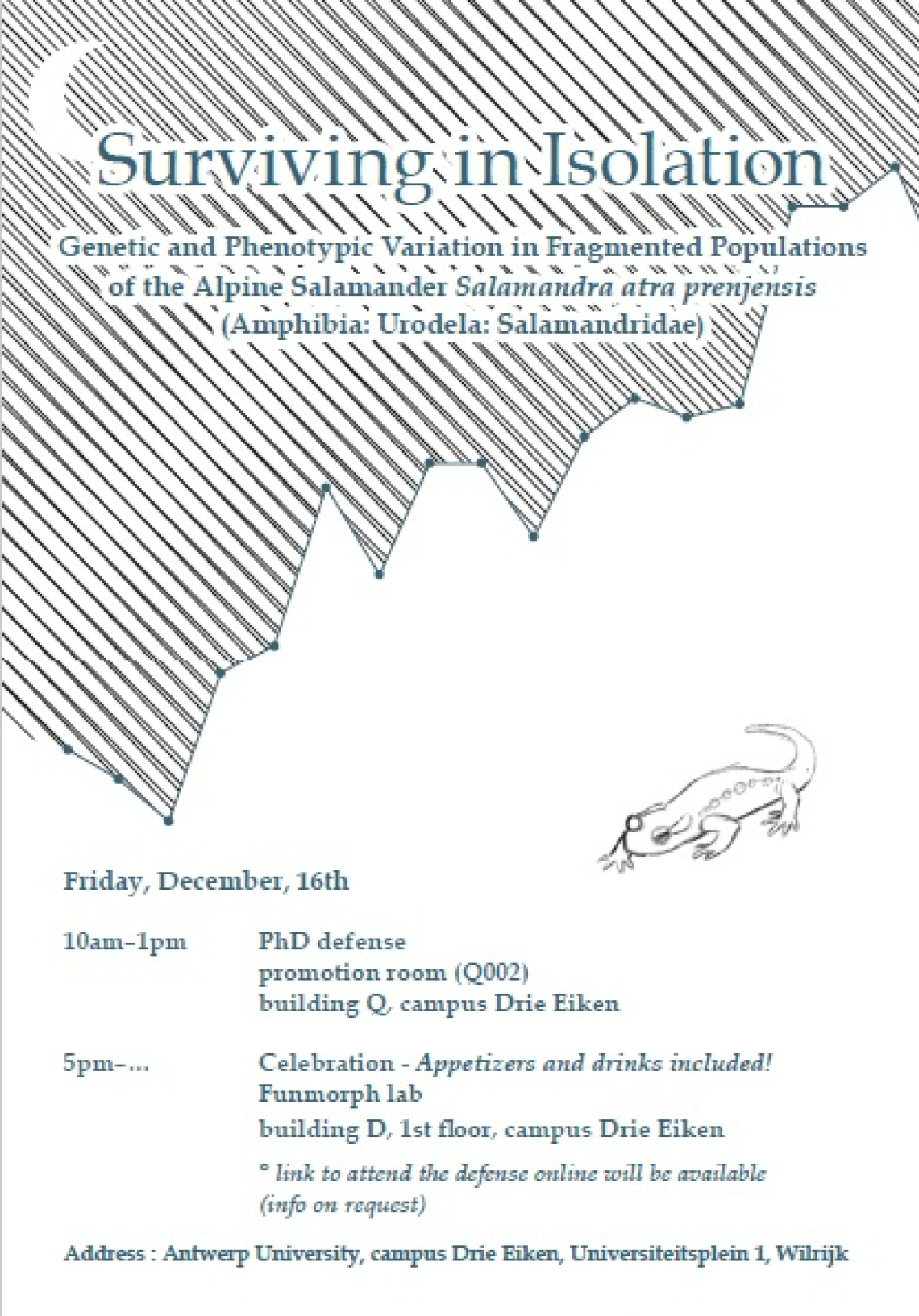
Emina Šunje defended her doctoral dissertation under the title: "Survival in isolation - genetic and phenotypic variation in fragmented populations of the alpine salamander - Salamandra atra prenjensis". The doctoral dissertation resulted from the cooperation of two universities (Antwerp and Sarajevo). The dissertation was completed thanks to the financial support of the Rufford Foundation, which has been supporting the conservation project of the Dinaric population of alpine salamanders since 2013.
The dissertation consists of a total of 8 chapters, six of which are in the form of a scientific research paper, and two chapters refer to the general introduction of the topic and the general discussion that resulted from scientific discoveries. The dissertation showed that the Dinaric populations of alpine salamanders are a unique evolutionary lineage within the species itself and that they possess specific morphological characteristics compared to the nominative subspecies (S. atra atra) that inhabits the northern and central Alps. These two discoveries support the questionable status of the subspecies S. a. prenjensis and indicate the need to define a special conservation status for this taxon.
Analysis of the diet of the Dinaric populations of the alpine salamander showed that the individuals are generalists and that the same dietary patterns appear in isolated populations. This research has shown that, in the salamander world, alpine salamanders have perhaps the most variable diet but that food intake is extremely low.
The dissertation also showed that there is some variation in the toxic substances that salamanders secrete, but that the amount of toxins secreted is not variable. We were unable to relate toxin variation to predation and infection pressure. Furthermore, the variation of mass-specific water loss rate (EWL) in two distant Dinaric populations was investigated using an experimental approach under controlled laboratory conditions (temperature and humidity). The results of this study suggest that specimens originating from drier environments are more resistant to water evaporation, which allows them to have prolonged activity above ground. Ultimately, multiple modeling techniques were used along with numerous climate model projections
to assess the impact of climate change on the species' distribution. The predicted loss of climatically suitable land for S. atra in the Alps is between 27 - 53% of the Alpine territory. The predictions for the Dinarides are more striking; the predicted loss of suitable land is between 52 - 87% of the Dinaric territory where the remaining land quality, necessary for the appearance of the species, becomes significantly worse.
Since the populations of S. atra show variation in several biological instances, this also signals the adaptive potential of the species. However, it remains unclear whether the adaptive potential will ensure survival given the detected amplitude of ongoing climate change. This doctoral dissertation provides insight into the biology of the species and the necessary knowledge to ensure the long-term conservation of alpine salamander populations.
The complete dissertation can be found at the link here.